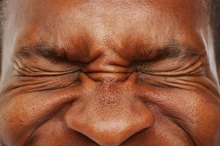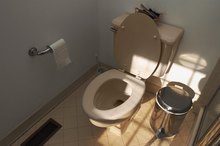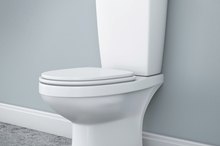What does fact checked mean?
At Healthfully, we strive to deliver objective content that is accurate and up-to-date. Our team periodically reviews articles in order to ensure content quality. The sources cited below consist of evidence from peer-reviewed journals, prominent medical organizations, academic associations, and government data.
- National Kidney and Urologic Diseases Information Clearinghouse: Your Urinary System and How It Works
- National Kidney and Urologic Diseases Information Clearinghouse: Prostatitis: Disorders of the Prostate
- MayoClinic.com: Prostate Gland Enlargement
- National Kidney and Urologic Diseases Information Clearinghouse: Urinary Retention
The information contained on this site is for informational purposes only, and should not be used as a substitute for the advice of a professional health care provider. Please check with the appropriate physician regarding health questions and concerns. Although we strive to deliver accurate and up-to-date information, no guarantee to that effect is made.
Common Male Urinary Problems
The urinary system excretes water-soluble wastes from the body through the urine. It also helps maintain the appropriate balance of chemicals and water in the body. Disorders of the urinary tract can alter a person's ability to urinate normally, which may have other negative effects throughout the body. In males, urinary problems may arise in the kidneys, ureters, bladder, prostate or urethra.
If you are experiencing serious medical symptoms, seek emergency treatment immediately.
Prostatitis
The prostate is a walnut-sized gland that sits below the bladder. The prostate surrounds the urethra -- the tube through which semen and urine pass through the body -- and works in conjunction with the male reproductive system. Prostatitis is a condition in which the prostate becomes inflamed, due to a bacterial infection or other unknown reason. Prostatitis can cause urinary frequency and urgency, pain or burning upon urination and pain throughout the lower abdomen. Other common signs and symptoms associated with prostatitis include difficulty urinating, groin or lower back pain, pain or discomfort in the penis or testicles and painful ejaculation.
- The prostate is a walnut-sized gland that sits below the bladder.
- Prostatitis can cause urinary frequency and urgency, pain or burning upon urination and pain throughout the lower abdomen.
Benign Prostatic Hypertrophy
What Are the Causes of Painful Ejaculation?
Learn More
Benign prostatic hypertrophy, or BPH, is a common male urinary problem, especially among middle-aged men. MayoClinic.com states that BPH, also known as prostate gland enlargement, can cause annoying urinary symptoms, such as a blockage of urine and bladder and kidney problems 1. Common signs and symptoms associated with BPH include:
- a weak urine stream
- difficulty initiating urination
- dribbling at the end of urination
- the frequent urge to urinate
- straining while urinating
- incomplete bladder evacuation
- blood in the urine
- urinary tract infections
Certain risk factors may increase the likelihood of developing BPH, such as aging, possessing a family history of the condition and being a white or black male.
Urinary Retention
Urinary retention -- the inability to empty the bladder -- is a common male urinary problem among men in their 50s and 60s. According to the National Kidney and Urologic Diseases Information Clearinghouse, the two principal types of urinary retention are chronic and acute. Chronic urinary retention is characterized by difficulty starting a stream and incomplete evacuation of the bladder. A person with chronic urinary retention may urinate frequently and feel an unrelenting urge to urinate, although he will usually be unable to void a significant amount of urine. Acute urinary retention is characterized by the complete inability to urinate. Acute urinary retention is a medical emergency that requires immediate intervention. Common signs and symptoms associated with chronic urinary retention include weak flow and overflow incontinence or post-urination dribbling. Common signs and symptoms associated with acute urinary retention include pain or discomfort in the lower abdomen and abdominal bloating.
- Urinary retention -- the inability to empty the bladder -- is a common male urinary problem among men in their 50s and 60s.
- Acute urinary retention is characterized by the complete inability to urinate.
Related Articles
References
Writer Bio
Robyn Hughes has been writing since 2008 about health, nutrition, fitness and botanical medicine. She is a naturopathic physician and freelance writer based in Durham, N.C. She holds a Bachelor of Arts in cognitive science from Indiana University and a doctoral degree from the National College of Natural Medicine in Portland, Ore.









